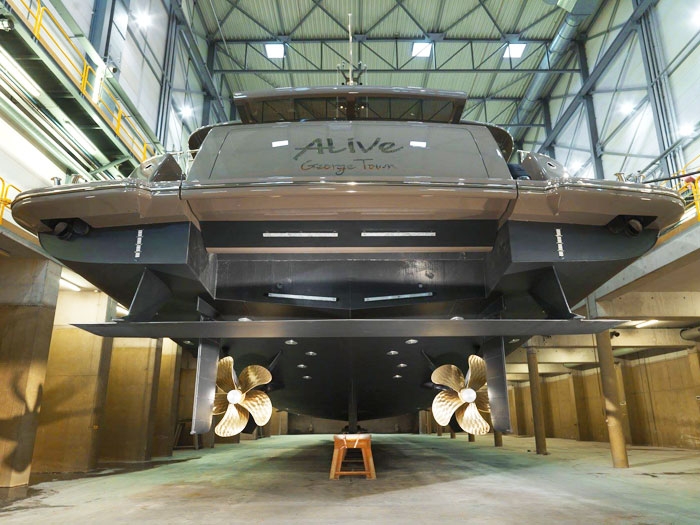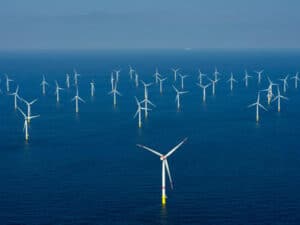
Hull Vane yields fuel savings for super yacht
Written by Nick Blenkey
MARCH 26, 2015 — The 42-meter displacement motoryacht Alive, recently delivered by Heesen Yachts in the Netherlands, is the first luxury yacht equipped with a Hull Vane, a fixed foil located below the stern that influences the stern wave pattern and creates hydrodynamic lift, that is partially oriented forward. This results in a reduction of the ship’s total resistance, producing significant fuel savings.
The Hull Vane is targeted at relatively fast vessels sailing at displacement or semi-displacement speeds, which corresponds with Froude numbers of 0.2 to 0.7. In addition to superyachts, suitable ship types are ferries, naval and coastguard ships, offshore supply vessels, midsize container vessels and small cruise ships.
The Alive is the third full scale application of the Hull Vane, following a 30 m passenger catamaran and a 55 m offshore supply vessel. According to Hull Vane BV (a company set up by the system’s inventors Van Oossanen Naval Architects), full scale test results have proven fuel savings averaging 20% in the yacht’s useful speed range (12-16 knots).
Even without Hull Vane, the hull shape of MY Alive is very fuel efficient, as it is based on Van Oossanen’s Fast Displacement Hull Form (FDHF). Model tests at the Wolfson Unit showed unprecedented fuel economy for a yacht of these dimensions – and this was later confirmed at sea.
In July 2014, back-to-back comparison trials were done on a 55 m Fast Supply Intervention Vessel, confirming the predicted fuel savings for that vessel of 10% at 12 knots up to 15% at 21 knots. As the Hull Vane is integrated into the construction under the yacht’s swim platform, a similar comparison could not be made when the Alive underwent sea trials in November since testing without the Hull Vane was not possible.
Speed trials on the Alive did, however, correspond exactly with the predicted resistance curve using computational fluid dynamics (CFD) software and model tests, which showed that the Hull Vane reduces the resistance by 20% at cruising speed.
With her pair of 1,080 kW main engines, Alive reaches a top speed well over 16 knots.
As the Hull Vane was incorporated into the design of MY Alive from the beginning, it already saved money and space during the build: smaller main engines could be installed for the same top speed and smaller fuel tanks could achieve the same transatlantic range.
The Hull Vane is an attractive option for suitable newbuilds, as the cost savings on the main engines often outweigh the cost of the Hull Vane. Thus for roughly the same overall build cost, says Hull Vane BV, a ship can be built with more usable interior volume, significantly lower fuel consumption and better seakeeping in waves.






Leave a Reply
You must be logged in to post a comment.